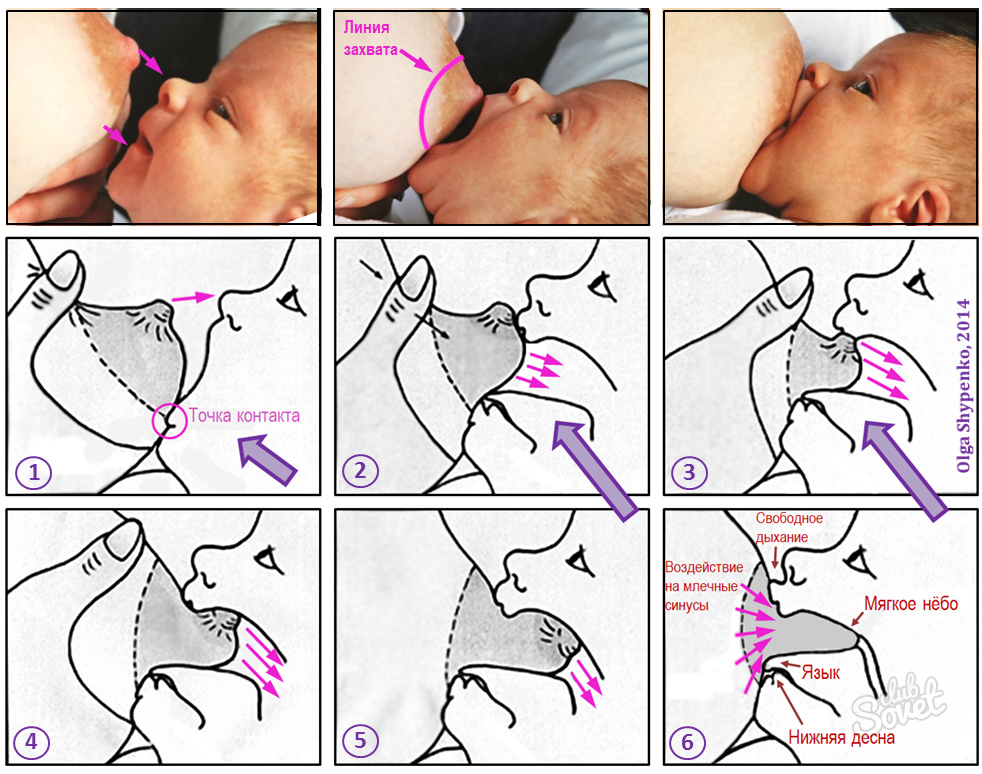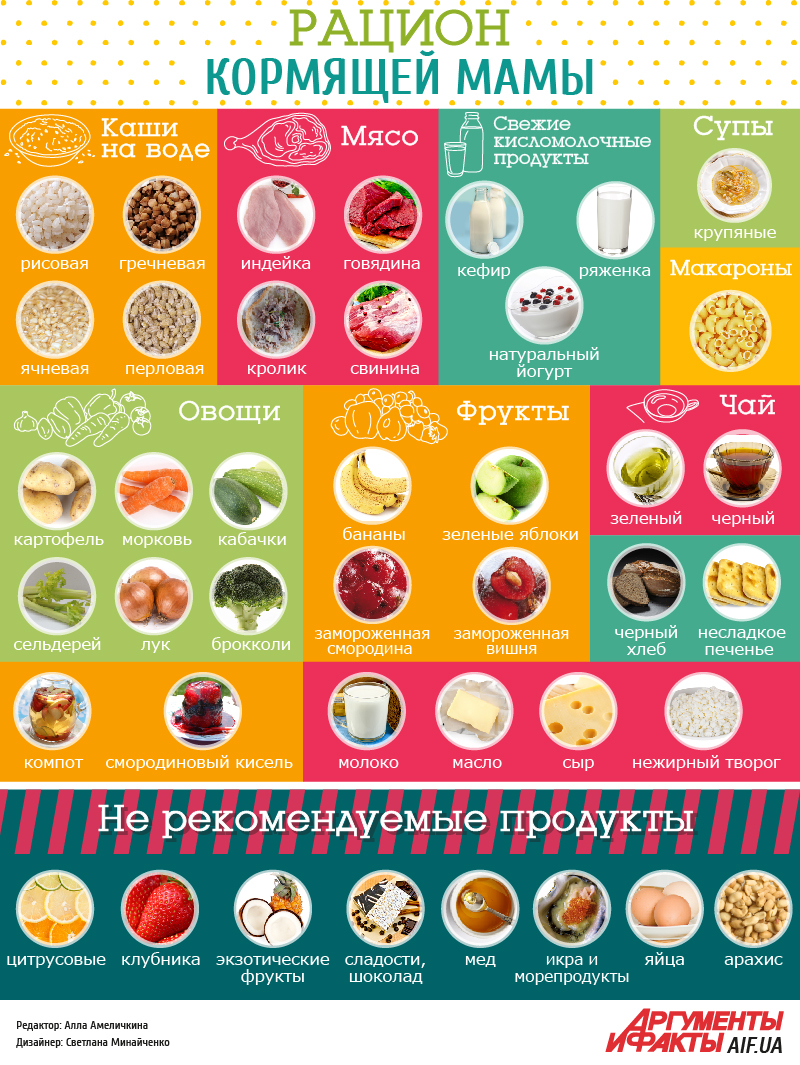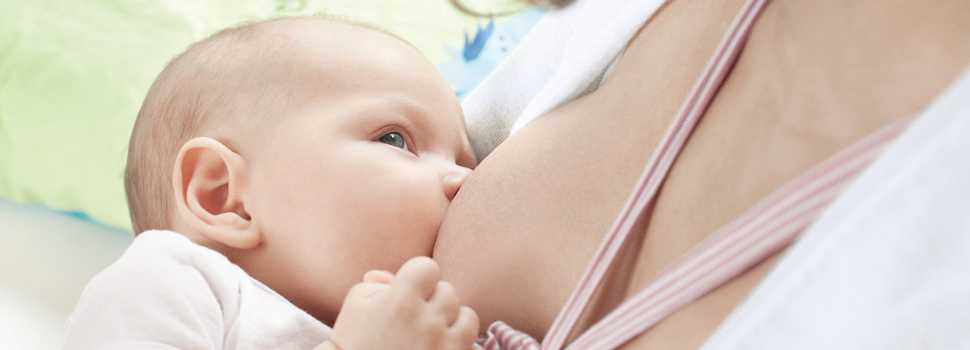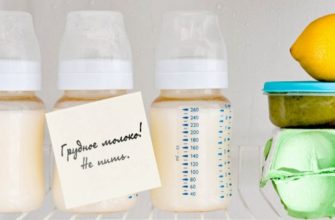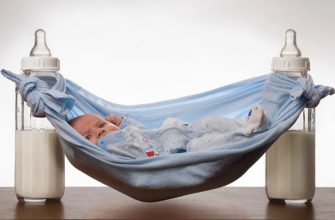An ideal nutrition for a newborn is breast milk. It contains all the nutrients necessary for the crumb in full, ensuring its growth and development. Therefore, doctors advise to maintain breastfeeding for up to 1.5-2 years. It also helps to establish a close emotional relationship between mother and child, to satisfy the infant’s psychological needs for affection and love.

However, it happens that in the process of breastfeeding a woman meets with a number of problems, especially if the first birth. The recommendations of GV specialists will help to cope with difficulties and maintain lactation for as long as possible, providing proper nutrition for the baby. And expert advice will tell you how to take care of the health of mom and baby during the entire period of breastfeeding.
We recommend bookmarking the page.
Breastfeeding
1. The first application.
Ideally, it should occur immediately after birth, or within the first 30 minutes after them. Physical contact between mother and baby provides a powerful incentive to start the process of lactation and its long preservation. In addition, this will help the baby learn how to grab the nipple faster. If the first application immediately after birth is impossible, it is necessary to ensure constant contact of the newborn with her mother.
2. Feeding on demand.
Giving the baby a breast is necessary as soon as he shows signs of anxiety. Do not stop feeding until the baby releases the nipple from the mouth. Doctors recommend feeding the newborn every 2 hours during the day and about 4 times at night. Night feeding is necessary to maintain normal lactation.
3. Do not force to eat.
If the baby does not take the breast, do not force it. This will only scare the baby, and he may even refuse breast milk. The right action will often offer the baby a tiny breast: when hungry, he will certainly suck.
4. Proper attachment.
When feeding, the baby should capture both the nipple and part of the areola. His nose, as well as his chin should rest on his mother's chest. To prevent the baby from swallowing excess air, the mouth should be open wide, and the lower lip turned out. Feed in a position that is comfortable for both of you. What feeding position to choose, read link here. When applied correctly, chest and nipple pain should not be felt. And the baby should be relaxed and satisfied.
We also read: how to apply the baby to the chest?
5. Incorrect chest grip.
It happens that the baby does not capture the chest correctly. In this case, the mother may have nipple or chest pain, It is also fraught with the appearance of cracks, the development of lactostasis and mastitis. Carefully insert the little finger into the baby’s mouth and remove the nipple, then insert the nipple again.
6. The baby chokes during feeding.
Make sure the baby grasps the nipple correctly. Perhaps you should change the position for feeding. You need to sit with your back straight, and raise the crumbs head higher and hold with your hand. Often the reason that the baby is choking, becomes an excess of milk. If this is the case, you need to strain it a bit before feeding.
7. Let the baby empty her chest to the end.
In this case, the baby will receive front and back milk, which means all the nutrients. Frequent breast changes cause a lack of posterior milk, which can result in small weight gain and intestinal problems in the baby.
8. Do not feed with mixtures and do not introduce complementary foods before 6 months.
Pediatricians recommend the first six months exclusively breastfeeding. This will help to form the baby’s immune system, provide all his needs. Additional feeding with mixtures is possible only if the milk is really very small and the baby does not have enough breast milk. The first lure should be administered no earlier than 6 months of life crumbs. If you decide to supplement with mixtures or introduce complementary foods, consult your doctor.
9. When the baby needs feeding
- There is very little milk or it is completely gone. Even in this case, you should try various methods to increase lactation: special teas, compresses, and diet. If all else fails, a mixture should be given, but breasts should still be offered;
- The baby was born prematurely;
- The little one gains or even loses weight;
- Maternal disease and medications that are not compatible with breastfeeding;
- Long separation of mother from baby (going to work, leaving, etc.).
10. Feed your baby correctly.
With a small amount of artificial nutrition, use a pipette or syringe. A larger amount of the mixture should be given with a teaspoon or cup. Bottle feeding is easier for mom, but after it the baby may refuse to take breasts. The amount of the mixture should not exceed 30-50% of the daily amount of baby food. This will help maintain breastfeeding. When choosing a mixture, you should consult a pediatrician (how to choose a suitable and good milk mixture, read this article).
11. Do not give your baby water.
Breast milk contains up to 85% of water (front milk is liquid and watery, it can quench a baby’s thirst in full), so the child does not need additional drink. Water should be offered only after the introduction of the first feeding, not earlier than 6 months. If it is very hot and the baby is sweating, often offer him breasts, wipe with wet wipes, bathe.
12. Do not give a pacifier often.
With frequent use of the dummy, the production of milk in the mother decreases. In addition, it is subsequently difficult wean a baby from a nipple. Give a dummy rarely and briefly. This helps the baby to calm down, satisfies the sucking reflex, and distracts from the unpleasant sensations associated with the tummy. A correctly selected nipple will form a bite, rubber products will help babies with teething first teeth.
13. Strain only if necessary.
Doctors advise against expressing milk frequently. This should be done in the following cases:
- The breast is full of milk and there is no way to attach a baby to it;
- Long separation of the mother from the baby, when it is necessary to leave him a supply of food;
- Mother cannot breastfeed; for example, with mastitis, lactostasis, taking medications incompatible with breastfeeding.
14. Store expressed milk properly.
Breast milk can be expressed in sterile, hermetically sealed containers. It should be stored in the refrigerator for about 2-5 days, if longer, then in the freezer.Special plastic bags are best suited for freezing. You can use glass or plastic containers. On the bottle should indicate the date when the milk was expressed. How to store expressed milk read in detail here.
15. Ask for advice from specialists.
If you experience problems with lactation, consult a pediatrician or breastfeeding consultants.
We also read: fundamental tips on GW for nursing mothers
Catering for a lactating woman
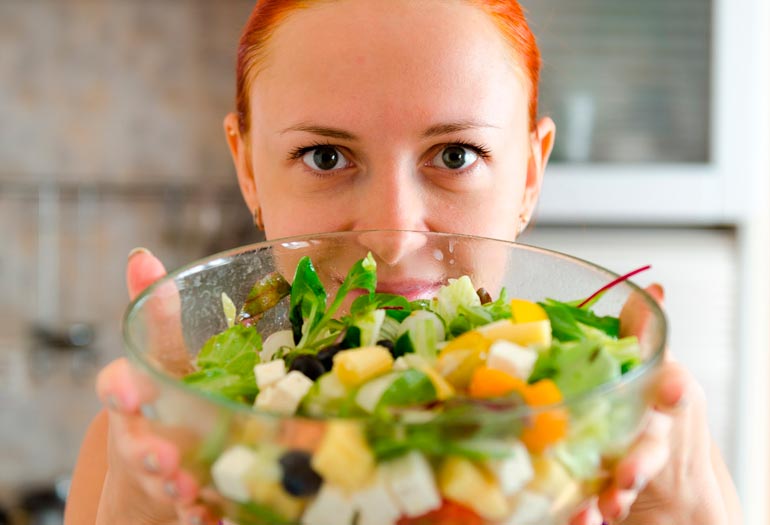
16. You can not sit on a strict diet.
During childbirth and during feeding, the female body loses a lot of nutrients and vitamins, the deficiency of which must be filled. The baby should also receive good nutrition, fully containing all the useful elements. Therefore, the mother’s diet for HS should be varied.
17. Eat a little and often.
Avoid overeating - this often leads to digestive problems in the baby. Excessive foods can cause constipation, diarrhea, and even poisoning. In addition, it increases gas formation and enhances colic, which is already quite painful for the baby.
18. Gradually introduce new foods to your diet.
The first three months after birth, the body of the newborn gets used to the new environment. Therefore, introduce new products carefully. Try one product, then look for the baby’s reaction. If he feels well, there is no stool or allergy disorder, then this can be used further. If a reaction occurs, wait a month, and then try again. Do not try two new products at the same time, take breaks in 3-5 days.
19. Exclude allergic foods in the first month of HB.
It is in the first month that the body of the newborn is most susceptible to allergens. Therefore, exotic (except bananas) and citrus fruits, sweets and flour products, brightly colored berries and vegetables, products containing cow protein, and chocolate should be excluded from the diet.
20. Diet in the first month of GW:
- Low-fat broths and soups;
- Vegetable purees: cauliflower, broccoli, zucchini, potatoes;
- Porridge on the water: buckwheat, rice, oat;
- Stew or boiled meat: beef, rabbit, turkey;
- Green apples, bananas after heat treatment;
- Dairy products (except kefir);
- Sour cream and cottage cheese with a low fat content, hard cheeses.
21. Heat treatment of products.
Prefer stewing, cooking or baking, exclude fatty, salty and spicy, fried foods. Do not use ketchups, sauces, mayonnaise and seasonings, as well as canned food and seafood. For refueling, use sour cream, lemon juice, vegetable oil. 2-3 months after giving birth, you can eat fresh vegetables and fruits.
22. Drink more fluids.
A warm, plentiful drink stimulates milk production. The daily intake of liquid for a nursing woman should be 2-3 liters, and half of this amount should be simple drinking water. Nursing mothers can also drink green and weak black tea, fruit drinks, sour-milk drinks, natural juices. Cow's milk often causes allergies in babies, so you need to use it with caution, not earlier than 4-6 months, and in a minimum amount. Cocoa and coffee can be introduced from six months.
23. Exclude alcoholic beverages. Alcohol consumption adversely affects the baby's health: it can cause diseases of the heart, blood vessels, and nervous system. It is believed that a few sips of wine will help the baby fall asleep faster. Perhaps he will fall asleep quickly, but the quality of his sleep will suffer: he will often wake up, toss and turn. Even a small portion of alcohol can harm the health of the baby. On the dangers of alcohol during the period of GV read here.
We also read:
Take care of your chest
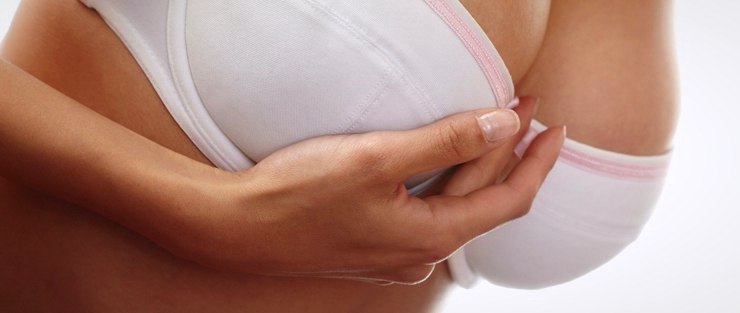
24. Do not wash your breasts too often.
It is enough to take a shower twice a day.Avoid deodorized products and antibacterial soap to wash your breasts. They can cause allergies, and also wash off the protective layer on the nipples. Normal baby soap and soft wipes are suitable for wiping. But wash your hands before each feeding the baby.
25. Choose comfortable underwear.
The bra should make it easy to open and close the chest with one hand. The cups should be free and not squeeze the chest. The bra should be pitted and without seams inside the cup, as they can hurt or rub the skin of the nipples. Choose underwear made of soft and breathable material such as cotton or microfiber.
26. When leaking milk, insert special pads for the breast into the bra.
They provide excellent breast hygiene by absorbing excess milk. Such pads will protect the skin of the nipples from rubbing underwear, help with cracks, protect clothes from getting wet. Gaskets should be changed when they get wet.
27. Massage breast.
Massage enhances milk production and prevents stagnation. Before this, rinse your breasts and wash your hands with soap. You can grease your hands with castor or olive oil. Massage should be done clockwise with light circular movements, 2-4 minutes per chest. You should not put much pressure on the skin, rub it and squeeze the mammary glands. Particularly effective massage during the shower. We read in detail about how to do breast massage.
28. Apply compresses.
Warm compresses stimulate the flow of milk, so they need to be done before feeding. Cool compresses soothe the chest - they are applied after. Also, cabbage leaves are used to restore the breast: they relieve swelling and pain, promote healing of cracks in the nipples, and help with painful flushing of milk.
29. Express milk properly.
For a full milk composition, it should be expressed for at least 20 minutes. Then it will contain front and back milk. Do not underestimate the front milk, because it is watery and less oily. It is thanks to him that the baby satisfies thirst and makes up for the need for fluids. We read how to properly express the breast with a breast pump.
30. Hand jerking.
To express milk by hand easily and painlessly, you should alternate breasts, giving for every 5 minutes. Before expressing, take a warm drink, take a shower, do a massage. If milk starts to drop out, wait a few minutes, then resume pumping. You can not stretch and squeeze the nipples, squeeze the skin of the chest. Details on how to express milk by hand.
Possible breast problems
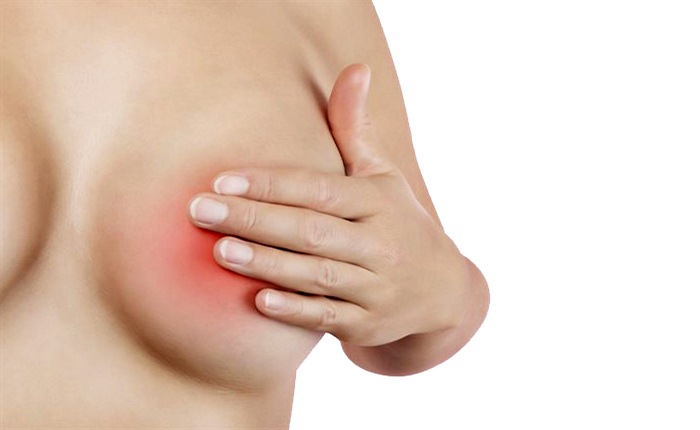
31. Lactostasis.
Stagnation of milk is manifested by pain in the chest and nipples, tightness and redness on the skin, lack of milk during feeding. Breast temperature may rise, but body temperature remains normal. Such a disease can be caused by insufficient emptying of the breast due to improper attachment, excessive milk production, tight underwear, cracks in the nipples.
32. How to cope with lactostasis
- As often as possible, apply crumbs to the chest, while trying to ensure that the seal is under his lower jaw;
- Take a warm shower and do a light massage of the chest, gently patting and kneading seals from the periphery to the nipple;
- Strain the breast with gentle movements also from the base to the nipple, and then offer the breast to the baby;
- Apply healing compresses. After feeding, attach cabbage leaves, beaten to obtain juice, for 15-20 minutes. Before going to bed, make a warming compress using camphor oil, or soda-saline solution.
In detail: lactostasis and treatment
33. Mastitis.
Lactostasis can lead to mastitis - inflammation of the breast. Mastitis is manifested by severe pain, seals, the formation of tubercles in the chest. Body temperature rises, chills may occur. An abscess may form in the breast, then pus is mixed with breast milk. With this complication, you can not breast-feed a baby. Seek immediate medical attention.It is forbidden to apply warming and alcohol compresses, as well as knead and massage sore spots.
In detail: Mastitis. Treatment
34. Cracks and abrasions on the nipples.
They often arise due to improper grip of the nipple by the baby, intense pumping, irregular flattened nipples, frequent breast washing. Usually the pain goes away when lactation is getting better. We read how to feed a baby with cracks in the nipple.
35. Treatment of cracks in the nipples.
When injuring the skin of the nipples, do not give up breastfeeding. For cracks, you can use special nipple covers during feeding. If the cracks are deep and very painful, you need to express milk and give the child from a spoon. Do not use antibiotic ointments, iodine, brilliant green, or alcohol. For treatment, ointments and creams containing vitamin A and lanolin are suitable. They soften the skin, promote wound healing, and prevent the appearance of new cracks.
36. Medicinal ointments for the treatment of cracks.
- Bepanten. Antibacterial cream for the prevention and treatment of cracks in the nipples. Should be washed off before feeding the baby. Also effective for treating diaper rash in babies;
- Purelan, Sanosan Mom, Avent, Mom Comfort, Visible. They do not require rinsing before feeding, moisturize, eliminate peeling, and promote wound healing.
37. Folk remedies for cracked nipples.
- Squeeze out a few drops of breast milk and grease the nipple, leave to dry;
- Compresses from cabbage leaves;
- A decoction of chamomile or birch leaves. 2 tablespoons of the collection are boiled in 0.5 liters of water, the nipples are wiped;
- Lubricate the nipples with vegetable, sea buckthorn or butter. Before feeding, be sure to rinse;
- Compresses from beets, grated to gruel. Change after drying.
38. You can not pull the chest.
When hyperlactation or its completion do not overtighten your chest with bandages! This compresses the mammary glands and can cause lactostasis or mastitis.
39. Thrush.
If you do not treat cracks and do not care for your nipples, a fungal or staphylococcal infection may develop. It is manifested by a whitish coating on the nipples, as well as the tongue and gums of the baby. The child becomes moody, cries, refuses to breast. A woman experiences severe pain inside the chest during and after feeding, and rashes and redness appear on the skin of the breast. It is necessary to consult a doctor on time and conduct treatment.
40. Mastopathy.
This is the appearance of benign formations in the chest in the form of seals and nodules. At the same time, the breast increases in volume, it hurts, bloody, white or colorless liquid may be released from the nipples. For the treatment of mastopathy, seek medical attention immediately.
41. If the baby bites his chest.
In this case, put the little finger in the baby’s mouth, and carefully remove the nipple. Strictly say that you can’t do this. Continue to do so until the baby stops biting her chest. As an alternative, offer baby slingobus or finger games (sometimes the baby plays in this way.). Often an infant bites its chest when its teeth are cut. Give him a rubber teat or special rubber teething teeth.
Problems during lactation
[sc name = ”ads”]
42. Delayed lactation.
Sometimes it happens that after delivery, milk does not come. Especially often, lactation retardation occurs in women who give birth for the first time. In this case, do not give the child a mixture. It is necessary to apply the baby to the chest as often as possible, with its sucking it stimulates the arrival of milk. Even a few drops of colostrum will be enough for the newborn to get enough. It is also helpful to do light massage and warm compresses on the chest.
43. Is it worth increasing the fat content of milk?
At 85-90%, breast milk consists of water, so it does not need to be too fat. Its composition changes gradually along with the age of the baby. If a child gains weight well, is active and healthy, then milk fully satisfies his needs.Too much fat milk can cause dysbiosis and colic in the baby.
44. Check the fat content of milk.
You can check the fat content of milk at home. To do this, strain a little milk in a glass container 15 minutes after feeding and leave for 6 hours at room temperature. Milk will be divided into two parts: at the top there will be one that shows fat content. Measure this part with a ruler: 1 millimeter - 1% fat. The normal fat content is 3.5-5%.
45. How to find out if the baby has enough milk.
The following indicators are important for this: the number of urinations and weight. If the baby has enough milk, he writes more than 8 times a day. The urine is odorless, colorless or light yellow, transparent. Regarding weight, normal babies should gain about 120 grams per week. For a month, this figure should be 500 or more grams. By the age of 6 months, the baby should gain about twice the weight compared to the weight immediately after birth.
We also read: how to understand if there is enough milk for the baby?
46. If there is not enough milk.
If there is a shortage of breast milk, review your diet and apply the baby as often as possible to the breast. Doctors may recommend special herbal teas to enhance lactation. Medicines should be taken only if prescribed by a doctor, otherwise they can adversely affect the health of the child.
47. To increase lactation
- Frequent attachment to the chest is an excellent way to stimulate lactation;
- Make sure that the baby grasps the chest correctly, choose a comfortable position for feeding;
- Apply skin-to-skin contact: apply the baby to the bare chest;
- It is not necessary to supplement the child with water and to feed with mixtures. Give the pacifier as little as possible;
- If necessary, use a pipette, syringe or teaspoon, but not a bottle with a pacifier;
- Eat varied and fully;
- Drink plenty of fluids: water, kompts, tea with milk, juices;
- Do daily light breast massage, warm compresses;
- Relax more, take walks in the fresh air;
- Try to avoid stress, overwork, lack of sleep.
We also read: What foods enhance lactation?
48. Medicines to enhance lactation.
Any medications for breastfeeding can be taken exclusively as directed by a doctor, because their components can cause allergies in the baby. The most popular drugs that increase breast milk production are:
- Hipp - herbal tea for lactating women, containing anise, fennel, nettle and caraway seeds;
- Grandma’s bast basket is a lactogenic herbal tea that tones and gives strength;
- Lactogon is a dietary supplement. Contains royal jelly, carrot juice, herbs and ascorbic acid;
- Apilak - tablets containing vitamins and royal jelly. May cause sleep disturbances;
- Mlekoin - medicinal granules containing plant substances;
- Femilak - a dry milk mixture, which includes cow's milk, milk whey, plant components;
- Milky Way - a food supplement in the form of a dry mixture, contains soy protein and herbs.
It is necessary to take into account the individual characteristics of the body: what will help one woman may be useless for another, and vice versa.
49. Hyperlactation.
It also happens that too much milk is excreted. This is a phenomenon of hyperlactation, which leads to regular stagnation in the chest, involuntary leakage, painful sensations, fatigue and sleep problems. During hyperlactation, the baby is choked with milk, swallows excess air, and often remains hungry. If there is too much milk, express front milk before feeding, limit fluid intake. Alternate the breasts not every feeding, but every 6 hours, while decanting a little “non-feeding” breast until the condition is relieved.
50. End of breastfeeding.
You can wean a child from the breast at the age of 1.5-2 years.The baby has already erupted all his teeth, and he is completely ready to chew and digest ordinary food. Lactation should be completed gradually, removing one breastfeeding. For example, first replace the feeding during wakefulness with regular food, then remove the feeding after sleep, then - feeding before bedtime, and so on. After cessation of feeding, milk may arrive for several weeks or months. At this time, reduce the amount of fluid, actively engage in sports. Compresses and infusions made from mint or sage are also effective.
We also read: how to wean a baby from breastfeeding
51. How to restore breastfeeding.
If for some reason the milk is missing or its production is reduced, lactation can be restored. To do this, you often need to put the baby to the chest and gradually reduce the feed to stimulate sucking. The tactile contact between the mother and the baby is “skin to skin”. You can use massage, compresses, herbal teas to enhance lactation. We read in detail about how to restore lactation - 10 ways.
We also read: 8 milk shortage myths
Infant diseases
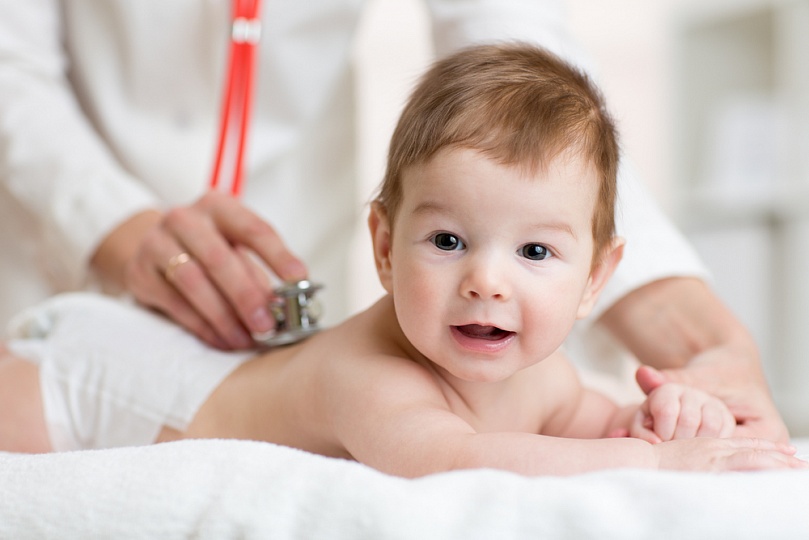
52. How to understand that a child is sick.
- Fever, fever.
- Low body temperature can be a reaction to infection.
- Frequent intermittent breathing.
- Refusal of food.
- Frequent moods, crying, restlessness, sleep disturbances.
- Vomiting
- Reduction of urination to 5 or less times a day, dark urine, with a smell.
- Change in the consistency and color of feces, the appearance in it of bloody discharge, mucus, foam.
- Diarrhea (too frequent stools), or lack of stool in general for more than 2 days.
53. If the baby has a high fever.
The child must be undressed and wiped with a soft cloth with water at room temperature. If the temperature does not drop after 10-15 minutes, give the baby an antipyretic in accordance with the dosage for a given age indicated in the instructions. The safest drugs are Ibuprofen and Paracetamol. Be sure to consult a doctor. Details on how to bring down the temperature read here.
54. Why is the baby crying.
The most common cause of crying is hunger or wet diapers. In addition, frequent crying may indicate the onset of the disease, poor health, anxiety, and fatigue. To determine the exact cause, other signs.
55. Colic in infants.
Intestinal colic - abdominal pain that is caused by increased gas formation. Colic often occurs in children aged 2-4 weeks and is associated with the addiction of the gastrointestinal tract to a new diet. Colic usually goes away by 3-5 months. Symptoms of intestinal colic in a baby:
- The child is anxious;
- Pulls legs to the tummy;
- Crying shrilly;
- There is a violation of the stool;
- It releases gases from time to time.
56. How to help babies with colic
- Before feeding, lay the baby on the tummy for several minutes;
- After feeding, you should hold the crumb vertically (in a column), waiting until it burps;
- Make sure that the baby does not swallow excess air during feeding;
- Do not eat foods that cause high gas production;
- Massage the baby’s tummy with light circular movements, clockwise;
- From time to time, bend and unbend the legs of the child towards the stomach and back;
- Apply a warm, but not hot diaper to your tummy;
- Add a decoction of chamomile when bathing - it has a relaxing effect;
- The cause of colic in babies on IV can be an improperly selected mixture.
57. Remedies for colic.
- Dill water. Add a teaspoon of fennel seeds or dill to a glass of boiling water. Insist an hour, after which give the baby a throat before feeding;
- Beefiform Baby and Espumisan Baby are allowed to give from the first days of life. These drugs calm and eliminate disorders, fill the gastrointestinal tract with beneficial microflora, and prevent dysbiosis;
- Plantex powder is allowed to give from two weeks of life. It contains fennel, which promotes the passage of gases and stimulates digestion and reduces colic;
- Drops Bobotik and Suspension Simplex suspension are indicated for babies from 1 month. They reduce bloating, relieve colic;
- The doctor can prescribe Linex crumbs, Baby Kalm, Babyos and other effective drugs for colic.
58. Manifestations of an allergy in an infant.
Any baby can cause an allergy: food, wool, dust, care products, plant pollen, and more. An allergic reaction can be of three types:
- On the skin: rashes and redness, itching, peeling, swelling.
- In the respiratory system: cough, runny nose, sneezing, and even asthma.
- In the digestive organs: vomiting, too much regurgitation, stool disorders.
59. Treatment of allergies.
The sources of an allergic reaction should be identified and eliminated. A lactating woman should exclude foods that are high in allergens. Babies on mixed feeding - try to give another mixture. Medicines against allergies to an infant and a nursing mother should be prescribed by a doctor.
60. Sweating.
It occurs in the baby as a reaction to severe overheating and sweat. Sweating is manifested by rashes in the form of bubbles. Unlike an allergic rash, they do not itch or itch. To cope with prickly heat, you need to maintain a comfortable temperature in the room 18-22 °, do not wrap the baby, bathe in a bath with a succession, observe hygiene. Almond oil, zinc paste can be applied to the affected areas. If fluid in the vesicles begins to darken, consult a doctor immediately!Details about sweating.
61. Spitting up.
Spitting is a physiological process and is observed in children up to 4-7 months. The dropping of milk or mixture occurs spontaneously 15-20 minutes after feeding. If the baby sprinkles too profusely or even a fountain, this indicates digestive upset. The cause of this phenomenon may be overeating or poisoning, you should consult a doctor.
62. How to recognize vomiting.
Vomiting indicates severe poisoning, digestive disorders and even pathology of the gastrointestinal tract. It is important to be able to distinguish vomiting from spitting up. Vomiting occurs after feeding once, the volume of the outgoing fluid is small (up to 5 ml). With regurgitation, the contents come out in their original form; the child feels normal. Vomiting can occur at any time, regardless of feeding, and in unlimited quantities. Content when vomiting is already partially digested, in the form of curdled milk, has a sour smell. The baby refuses to eat when vomiting, sleeps poorly, is worried, cries. Only vomiting can go in a fountain.
63. Dysbacteriosis in infants.
Dysbacteriosis is an imbalance in the intestinal microflora and occurs in 90% of infants. Such a disease is manifested by bloating, painful and frequent colic, sleep disturbance. Concomitant symptoms of dysbiosis include stool disorders, nausea and vomiting, problems with appetite, atopic dermatitis. Treatment should be carried out by a doctor. In detail about dysbiosis.
We also read:The most common diseases, ailments and problems of newborns (MINI DIRECTORY)
Baby chair
[sc name = ”rsa”]
64. What should be normal stool of the baby.
With HB, the baby's stool can be anything. It depends on the age and nutrition of the child. You can talk about deviations with stool with mucus, foamy stool, colorless or white feces, steep hard feces, stool with blood.
65. Green stool may be a normal option.
It can be cause for concern if it is accompanied by other symptoms: a sharp unpleasant odor, an excessively liquid consistency, a high content of mucus, fever and weight loss, bloating.
66. Stool with mucus.
A small amount of mucus is present in the feces of any healthy person. Digestive disorders and infections are indicated by the high content of mucus, as well as the color of the secretions.With colds and bacterial infections, feces may be yellow or green with mucus. Transparent feces occur with intestinal inflammation, enterovirus infection, and colds. White feces indicate an intestinal infection.
67. If the baby has a foamy stool.
Such stools can be caused by several reasons: dysbiosis, allergies, infection, and even malnutrition. Usually it is enough to adjust the nutrition of the baby and mother to normalize digestion. Treatment is necessary for an infectious disease and a severe allergic reaction.
68. The problem of loose stools.
The first three months of life in a baby is just loose stools. While breastfeeding, the baby can walk mostly 8-12 times a day, sometimes after each feeding. By 6 months, the number of bowel movements reaches 2-5 times, by 1 year - 1-2 times a day.
69. Diarrhea or loose stools?
It is important to be able to distinguish diarrhea from regular loose stools. With diarrhea, the number of bowel movements increases significantly, the baby cries, and can refuse food. The output of bowel movements occurs sharply, sometimes mucus, foam or blood appears in them. The consistency of the stool becomes watery, has a greenish color and a strong sour smell. Other possible signs: the baby loses weight, presses its legs to the tummy, as it is tormented by gases. Possible increase in temperature.
Often the cause of diarrhea in hepatitis B is new products that a mother or baby has tried. It is necessary to review food, remove supplementary foods, change the mixture in case of mixed feeding. No need to finish the baby or stop breastfeeding.
70. Constipation.
Constipation in a baby is the absence of stool for more than 2 days. In the first days after birth, stool once a day is considered normal, subsequently, the frequency of the stool of the child increases. With constipation, the baby cries, the tummy swells, there are problems with sleep. Vomiting is occasionally observed.
Often constipation in infants causes abuse by a nursing mother of flour and sweet foods, fatty, dairy foods. It is necessary to include more vegetables and fruits in the diet, to abandon fixing foods. To help the baby, you can do a light massage of the tummy, exercises with legs that imitate cycling.
71. How to normalize the stool of an infant
- When feeding your baby, offer a second breast only if he has completely emptied the first;
- Follow a balanced and healthy diet, do not overeat;
- Be sure to include dried fruits, dairy products in your daily diet;
- Responsibly approach the choice of the mixture with mixed or artificial feeding;
- Do not introduce complementary foods before 6 months, carefully monitor the baby’s reaction to the new product;
- If possible, do not feed and dairy baby.
What to do if a nursing mother gets sick
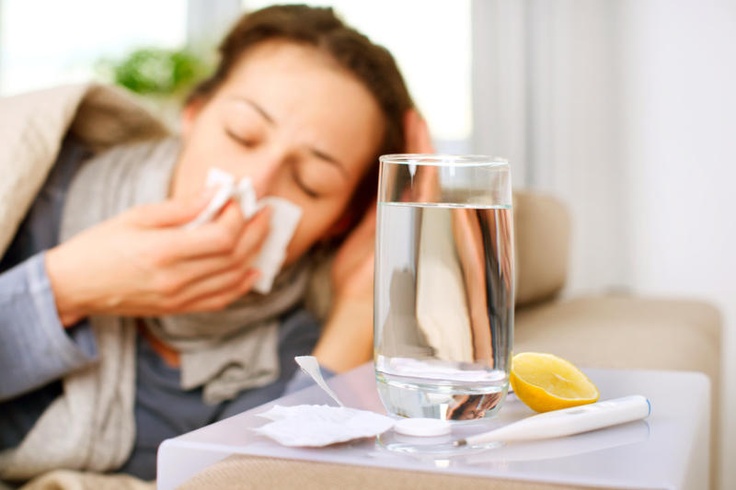
72. Do not stop breastfeeding.
Mother's milk contains antibodies and protects the baby from infection. Strained and boiled milk loses its immune properties, so breastfeed. In case of flu or a cold, wear a protective mask to protect your baby from viruses. Breastfeeding can be stopped for a while when taking potent drugs, if the doctor insists on this.
73. Consult a doctor.
In case of any disease, seek qualified medical attention. Only a physician will be able to choose drugs suitable for lactation. Self-medication can aggravate the disease and affect the health of the crumbs.
74. Use folk remedies.
In case of illness, do not rush to drink medicine. Perhaps, at first, traditional medicine can help (decoctions, infusions, compresses). However, you should also consult your doctor, because many herbs can cause allergies and affect lactation.
75. Drink medicine only as prescribed by your doctor.
When taking, carefully read the instructions for use, shelf life, contraindications and side effects.
76. Observe the necessary dosage and rules of administration.
In no case do not exceed the dosage prescribed by your doctor, even if you do not feel better. Perhaps he will pick you another medicine. Also, do not reduce the therapeutic dose, as the drug will not have an effect, but will pass into breast milk.
77. Do not self-medicate baby.
If the baby is still infected with a cold, do not give him any medicine. It will be enough those who penetrate into his body with mother's milk. If the condition of the child worsens, consult a doctor. Only he can prescribe treatment for the baby.
78. Time for taking medication.
If necessary, take the pill once a day, it is better to do this before the longest sleep of the baby. If you need to drink the medicine several times, then use it immediately after feeding.
79. Medicines authorized for breastfeeding:
- Activated Carbon, Smecta;
- Almagel;
- Creon
- Paracetamol and Panadol;
- Dibazole;
- Cetirizine and loratadine;
- Clexane;
- Amitiriptilin;
- Hydrogen peroxide, chlorhexidine, brilliant green;
- Lidocaine and ultracain;
- Glycine;
- Linex;
- Ibuprofen, Nurofen, Diclofenac, Ketanov;
- No-shpa.
80. Drugs to be taken with caution in case of hepatitis B:
- Suprastin and Tavegil;
- Verapamil;
- Venter;
- Fenoterol;
- Diazepam and other similar drugs;
- Imodium, it is possible only once;
- Furosimide;
- Foreralx, leaves of Senna and Guttalax;
- Insulin carefully choosing the dose.
81. Prohibited drugs during lactation:
- Aspirin;
- Citramone;
- Denol;
- Cordaflex;
- Trental;
- Reserpine;
- Diazoxide;
- Analgin and Baralgin, Sedalgin and Pentalgin;
- Phenyline;
- Persen and Novopassit;
- Codeine.
82. Antibiotics for lactating women:
- Penicillins;
- Aminoglycosides (Netromycin, etc.);
- Cephalosporins (Cefazolin, Zinnat, etc.);
- Macrolides (Sumamed, Erythromycin).
83. Antibiotics prohibited for use by lactating women:
- Tetracyclines and sulfonamides (Bactrim, Bi-Septol, etc.);
- Ciprofloxacin;
- Tinidazole and Metronidazole;
- Levomycin and clindamycin.
We also read:Can I breastfeed if my mother has a cold?
Self-care during lactation

84. Is it allowed to do manicure? A manicure for breastfeeding is recommended to be done no more than 1 time in two weeks. At the same time, he should be as sparing as possible. Vapors from varnish and liquid to erase it when breathing penetrate the blood of a woman and through her into breast milk.
85. How to manicure a nursing woman.
All instruments must be sanitized with hydrogen peroxide or alcohol. To reduce the ingress of harmful substances, do not bend low over the nails, put on a gauze bandage. Use only high-quality varnish and acetone remover. The interval between the procedure and the subsequent feeding should be at least 2 hours. Do not allow the baby to be nearby, ventilate the room well.
86. How to care for skin and nails with HS.
Use hypoallergenic, nourishing, moisturizing and protective creams for face and hand skin care with a neutral odor. Vitamin A solution, olive oil will help restore the skin. For hands, baths with soda and sea salt are suitable. To strengthen and lighten your nails, wipe them with a slice of lemon.
87. Is it possible to dye hair with HB.
There is no exact answer whether the chemical composition of hair dyes penetrates the woman's body and breast milk. But the vapors from them during the procedure, of course, are harmful. Therefore, also use a gauze bandage, ventilate the room well. Choose paints without ammonia, with reducing oils. Follow the instructions for use and exclude the child from being nearby during staining.
88. Safe hair dyeing for hepatitis B.
Of the chemical types of coloring, highlighting is most safe, since it is carried out retreating 3-5 cm from the roots. Therefore, the concentration of harmful substances entering the body decreases. You can use natural remedies. For example, to lighten hair, take a decoction of chamomile and lemon juice. To become a redhead - use henna or onion broth.And for painting in black, basma is suitable.
89. The problem of hair loss with HB.
Often, after giving birth, a woman is faced with such a nuisance as hair loss. The reasons for this: a change in hormonal levels, lack of vitamins during breastfeeding, malnutrition, stress. Normally, if up to 100 hair falls out per day. If the amount of hair lost is 400-500, then emergency measures should be taken!
90. How to cope with hair loss with HB:
- Refuse chemicals: staining, perm, varnishes and more;
- Do not use hair dryers, curling irons, and irons. Dry your hair in a natural way, do not comb wet hair, do not go to bed with a wet head;
- After washing, rinse your head with strengthening natural remedies: a decoction of chamomile, nettle, sour kvass, onion decoction;
- Choose a shampoo according to your hair type. Use gentle products with natural ingredients;
- Use special medical masks, balms, ointments. Carefully read the instructions, it is better to purchase them at the pharmacy;
- During washing, massage the scalp in a circular motion;
- Pay attention to your diet and regimen. Take special vitamins for nursing, eat fully, relax more;
- Do not be nervous over trifles!
91. How to lose weight after childbirth?
Observations show that a woman gains 7-13 kg after giving birth. After a few months, excess weight usually goes away. But it also happens that this mass remains. In this case, moderate physical activity, walking in the fresh air will be useful. During breastfeeding, you can not go on a diet, as this can harm the baby, because he will not be able to receive all the necessary elements in the proper amount.
We also read: how to lose weight after childbirth during the period of GV
92. Sports for a nursing mother.
- Walking;
- Pilates and yoga;
- Gymnastics and fitness;
- Swimming 2-3 months after birth;
- Aerobics and cycling are recommended for 6-7 months after the birth of the baby.
93. Sports contraindicated in HS.
Running and athletics, as well as weight lifting. During sports running, breast injuries due to fluctuations in the mammary glands are possible. Also, the chest can be injured due to the lifting of barbells, dumbbells. These types of exercise can reduce lactation.
94. Stretch marks after childbirth.
Cosmetologists insist that such a problem can be completely eliminated within 9-10 months after birth. To do this, rub the problem areas twice a day with a soft brush. During washing, direct a stream of shower to stretch marks, alternating cold and hot water. Also use special creams for stretch marks. To achieve the best effect, you must begin to eliminate stretch marks as early as possible.
We also read: how to get rid of stretch marks after childbirth
We introduce complementary foods
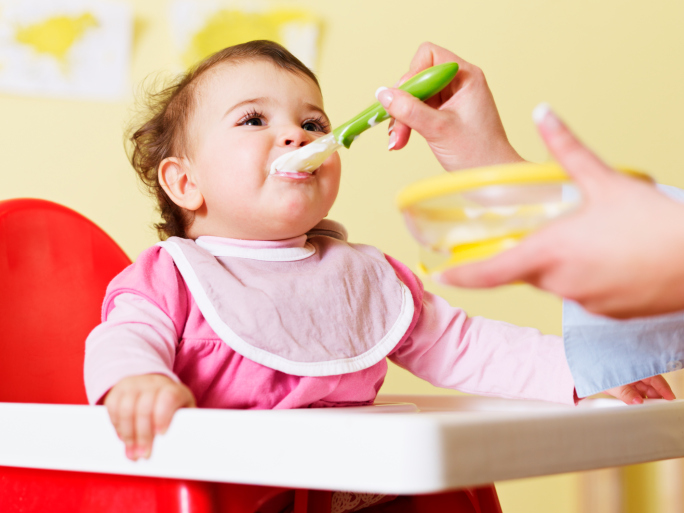
95. When to introduce complementary foods.
Doctors recommend giving a baby the first complementary foods no earlier than 6 months to a child on HB. These signs will indicate this: the baby can sit on its own, shows a keen interest in adult food, does not repel a spoon. At this age, babies may already be missing exclusively mom's milk.
96. How to introduce complementary foods.
Introduce the first lure only to a healthy child. It is given before breastfeeding, juices - after feeding. Start introducing the product with 5 g (half a teaspoon), bringing to 150 g within 2-4 weeks. The first feeding is given in the mornings, at 9-11 hours. At the same time, breastfeeding is necessarily preserved.
97. Watch the baby’s reaction to complementary foods.
When giving a new product, pay attention to the well-being of the child, his stool, and skin. If there is a rash, problems with stools or another reaction, you should wait 1 month with the introduction of this product, and then try again. The main rule is consistency and gradualness. That is, you can give only one new product and introduce another only after getting used to the first.
98. What to give in complementary foods.
- Starting from 6 months, pediatricians recommend introducing mashed potatoes into a healthy baby's lure.If the baby has a lack of weight, frequent constipation, then complementary foods should be started with cereals in the water. Also at this age you can vegetable oil;
- From 7 months you can give your baby dairy products, cottage cheese and butter;
- From 8 months, children can have fruit purees and cereals in milk, baby cookies and mashed meat;
- From 9 months, add fish puree and natural juices to the diet;
- From 11-12 months it is already possible to give semolina, pearl barley, millet porridge and berry puree.
We also read: the beginning of complementary foods for children on hepatitis B
99. Products that can not be fed to children under 2 years old:
- Semi-finished products and canned foods;
- Smoked meats and sausages;
- Ketchup, mayonnaise and other sauces;
- Seafood;
- Glazed curds;
- Mushrooms;
- Butter baking;
- Marinades and pickles;
- Cow's milk;
- Coffee and herbal teas;
- Chocolate.
100. Pedagogical feeding.
If the baby refuses to eat complementary foodsDo not force it. So you only beat off the appetite and complicate the introduction of complementary foods, plus scare the baby. Plant the baby during a family meal at the common table, constantly offer new food for him. If he refused mashed squash - offer him cauliflower. Demonstrate that it is very tasty, feed together a bunny or a bear. This is called pedagogical feeding.
[sc name = ”rsa”]
We also read:
- How to breastfeed on the street and in public places - tips and tricks
- What to do if a baby bites while breastfeeding?
- Fundamental advice to nursing mothers
Video Gallery: Breastfeeding A to Z

